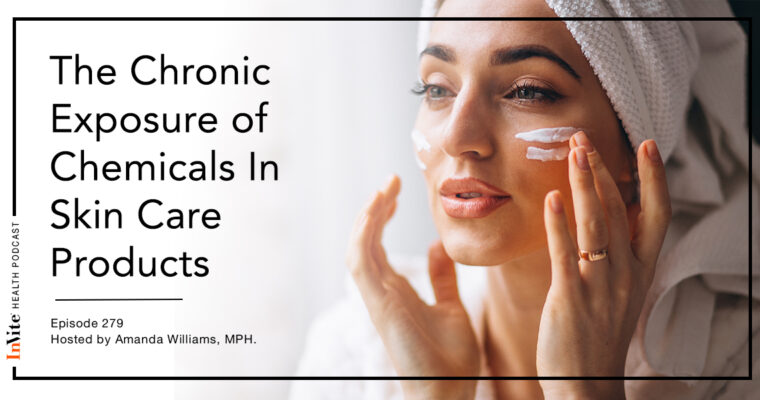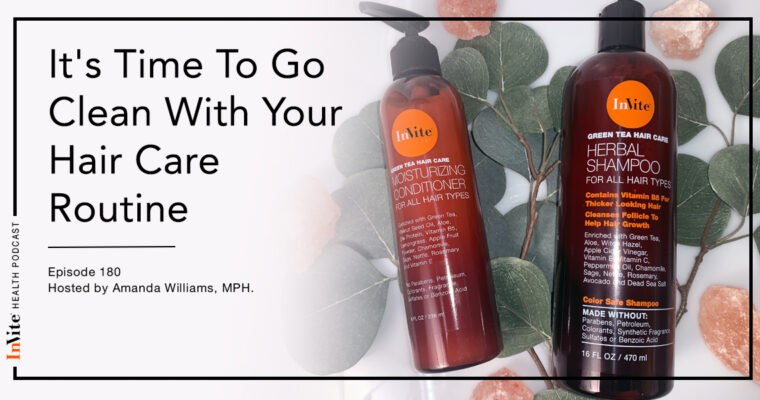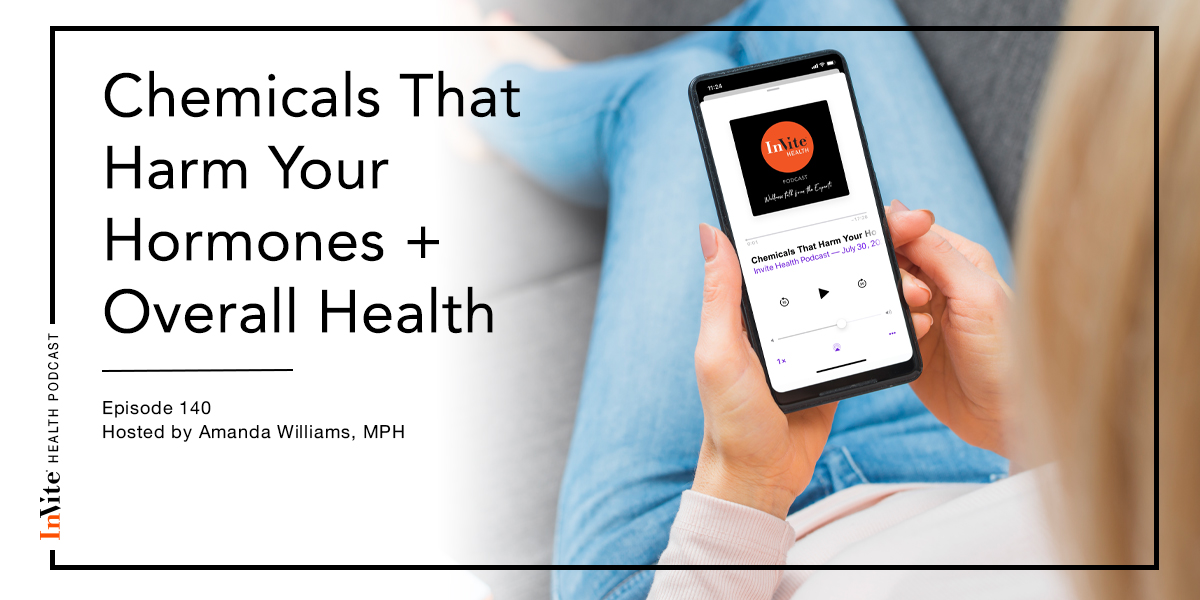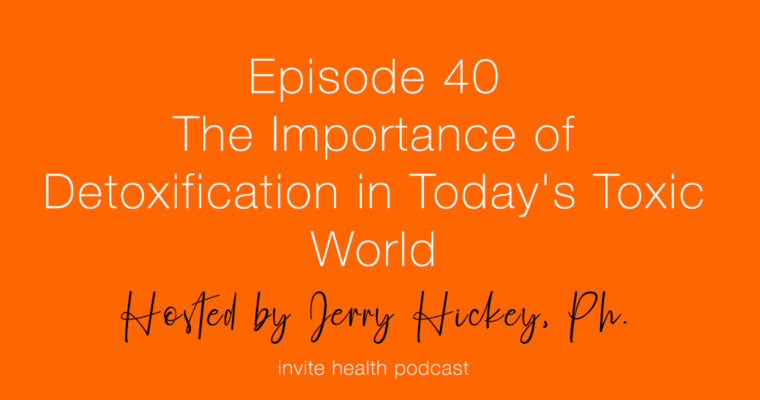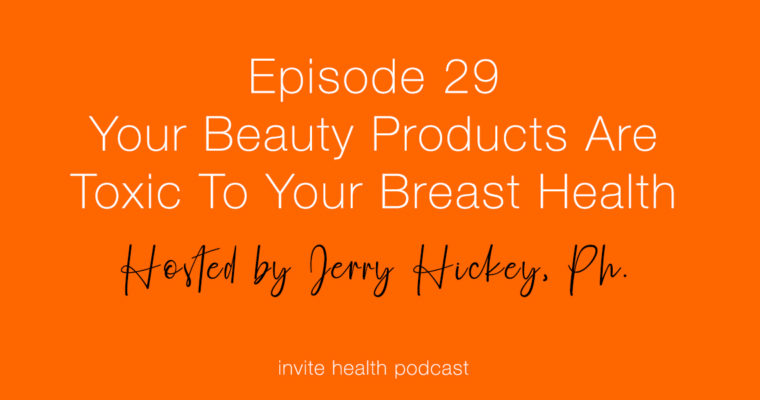Invite Health Podcast, Episode hosted by Amanda Williams, MPH.
Subscribe Today!
Imagine that you are getting ready to watch your favorite TV show. You grab your remote control, press the UP button to change the channel, but the channel numbers are actually going down. You think it’s a fluke so you do it again, and they are still going in the opposite direction. This is what happens during endocrine disruption. Here’s what you need to know about how the chemicals that are in your everyday products are impacts your hormones and overall health.
What is Endocrine Disruption?
There are many chemicals that can interfere with our hormones and overall wellness for our endocrine system. This system is a collection of glands that produce hormones that regulate things like metabolism, growth and development, tissue function, sexual function, reproduction, sleep and mood to name a few. Endocrine disrupters are chemicals that can impact these functions within the endocrine system.

What causes Endocrine Disruption?
These chemicals are found in the products you use everyday, including plastic bottles, tupperware containers, detergents, some foods, pesticides and many cosmetics. They are also slow to break down in the environment, which can make them even more dangerous overtime. Just this week, a report was published in the Lancelot that explained the link between these endocrine disrupting chemicals and the substantial cost to society in terms of disease-states, as many of these toxins and chemicals that are found in commonly used products. Health and beauty products are commonly classified as carcinogens, meaning that they are cancer-causing. These chemicals are not well regulated and companies are not required to disclose these chemical ingredients they are using in their products.
The report in the Lancet Diabetes and Endocrinology journal was published by multiple departments from New York University, University Grenoble Alpes in France, and The Center for Health and Environmental Risk Research in Japan. A summery of this research states, “There has been an increase in studies in humans of exposure to endocrine-disrupting chemicals and a deepened understanding of their effects on human health. Evidence is particularly strong from relations between perfluoroalkyl substances (heat resistant chemicals) and child and adult obesity, impaired glucose tolerance, gestational diabetes, reduced birth weight, reduced semen quality, polycystic ovarian syndrome, endometriosis, and breast cancer.”
Did you know that some beauty products are toxic to your breast health? Learn more by clicking here! >>
What Are The Safe Ingredients and Harmful Chemicals In Common Beauty Products?
Did you know that we absorb up to 60 percent of what we apply on our skin? Yes, it is true! Anything you are putting on your skin is being absorbed into your body and into your bloodstream. Our skin is the largest organ in our body and it is permeable, meaning it allows liquids or gases to pass through it. It is likely that your daily go-to skin care products are loaded with harmful toxins and chemicals that could be affecting your health negatively. We may not notice immediate reactions to these products, but overtime the toxic burden can slowly build up in our bodies.
Here are the ingredients commonly found in generic skin care products that can disrupt your endocrine system over time. Below you will also find superior ingredients that offer health benefits that go below and beyond your skin.
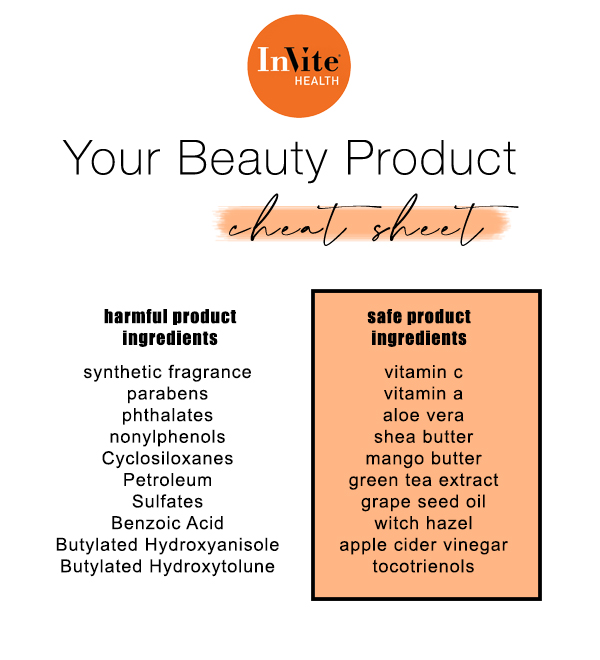
Other Key Topics
- The relationship between disease states and chemicals, including diabetes and PCOS
- Fertility issues caused by chemicals
Questions about chemicals and the common products you use? Leave a comment for Amanda Williams, MPH to join the conversation today!
Thank you for tuning in to the Invite Health Podcast. You can find all of our episodes for free wherever you listen to podcasts or by visiting www.invitehealth.com/podcast. Make sure you subscribe and leave us a review! Follow us on Facebook, Twitter and Instagram at Invite Health today. We’ll see you next time on another episode of the Invite Health Podcast.


